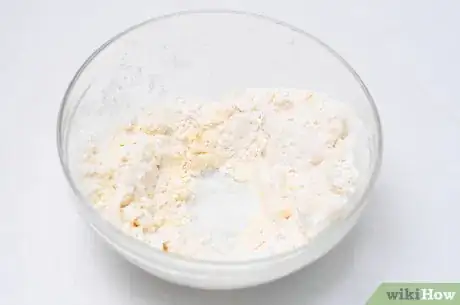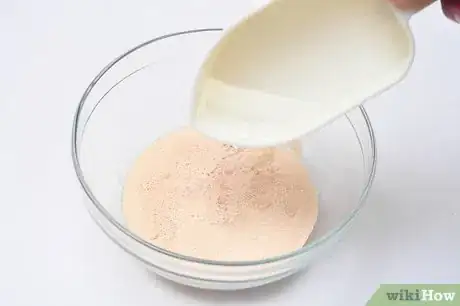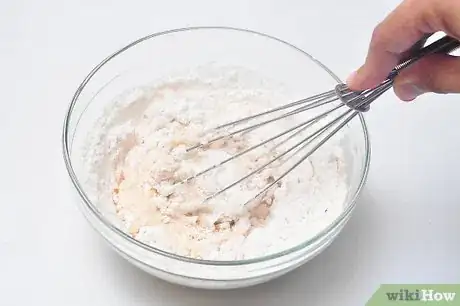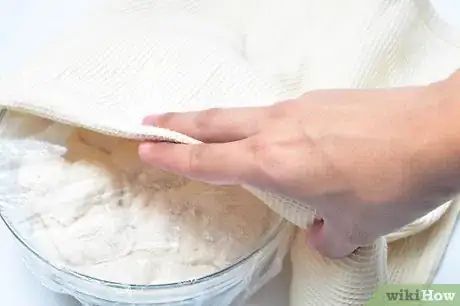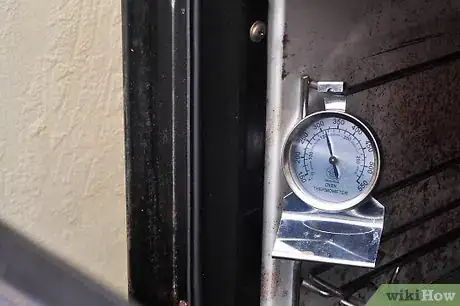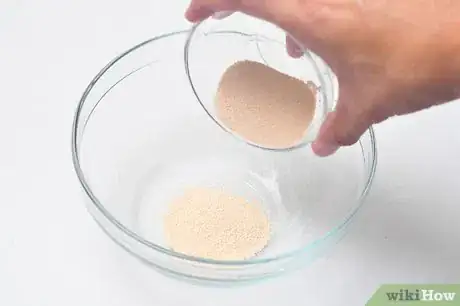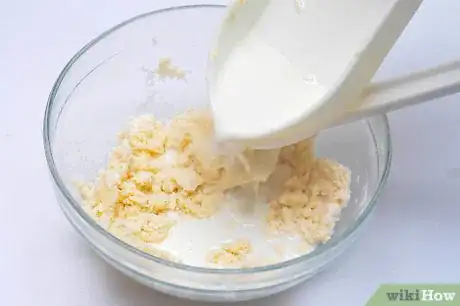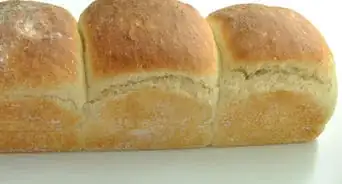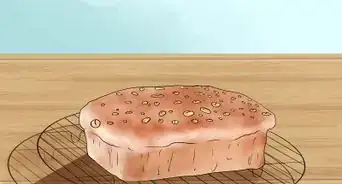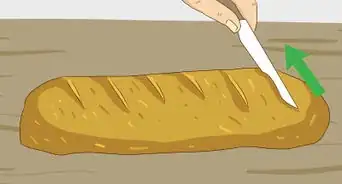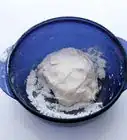X
wikiHow is a “wiki,” similar to Wikipedia, which means that many of our articles are co-written by multiple authors. To create this article, 11 people, some anonymous, worked to edit and improve it over time.
This article has been viewed 88,063 times.
Learn more...
The higher you ascend from sea level, the less pressure there is in the atmosphere. Altitude affects bread recipes by causing liquids to evaporate faster and bread dough to rise in twice the time it normally does. Adjusting bread making recipes for high altitude requires a trial-and-error process of using more or less flour, more or less liquid and sometimes less yeast.
Steps
Method 1
Method 1 of 2:
Bread Recipes with Yeast
-
1Decrease the amount of white flour in the recipe. You may need to use up to 1/4 less flour than the recipe calls for because flour loses moisture at high altitude which creates a dry-tasting finished product. You'll know there is enough moisture your high altitude bread dough when the mass pulls away from the sides of the bowl.
- Gradually add flour 1 tbsp. at a time if the batter is too wet or sticky. Your bread dough should be soft and easily handled after re-kneading.
-
2Increase the amount of liquid in the recipe if using wheat or rye flour. Add 1 tbsp. or more than the recipe calls for. These coarse flours lose even more moisture than white flour does at altitude.Advertisement
-
3Add additional liquid, 1 tbsp. at a time, if the dough seems to dry. Your dough should be soft, moist and pull away from the sides of the bowl after re-kneading.
-
4Add an additional rising cycle. Good tasting bread depends on a long, slow rising process but bread dough rises twice as fast in high altitude locations. Bread dough that rises rapidly will have a strong yeast-flavor and a dry texture. For the best flavor, allow enough time for 2 separate rising cycles and never let the dough to grow more than twice its size.
- Reduce the amount of rising time the recipe calls for by about 15 minutes or until the bread has reached nearly twice its size.
- Punch down your dough after the first rising cycle is over. Set into a bowl and allow it to rise again but for half the time of the first cycle.
-
5Add 1 degree of baking temperature for every 500 feet (152 m) above sea level. At altitude, heat molecules don't have enough energy inside them which results in a lower boiling point but also makes food take longer to cook. Baking at a higher temperature will set the bread structure quickly and stop dough from rising more.
-
6Use less yeast if all other altitude baking adjustments fail to provide firm bread dough that doesn't collapse after rising and baking.
- Reduce the yeast by 1/8 tsp. to see if you get a firmer bread dough. If you are unhappy with your finished bread, decrease yeast by another 1/8 tsp. each time you attempt the recipe until you are happy with the finished product.
Advertisement
Method 2
Method 2 of 2:
Quick Bread Recipes
-
1Use more liquid by adding 1 tbsp. of liquid per every 1 cup (236 ml) of flour called for in the recipe.
-
2Decrease the amount of sugar by as much as 1/4 of the total amount used in the recipe, since sugar causes flour to become dry.
-
3Decrease the baking soda or baking powder if you notice a bitter flavor the first time you attempt a high altitude quick bread recipe. Reduce leavening agents by about 1/8 tsp. each time you make the recipe until you end up with an ideal flavor.
Advertisement
Community Q&A
-
QuestionHow do you store freshly-made bread at high-altitude?
 Community AnswerYou can put it in a bread bag like it is kept in stores, or in a bread box on the counter. You can also slice, wrap, and freeze it so it will last longer.
Community AnswerYou can put it in a bread bag like it is kept in stores, or in a bread box on the counter. You can also slice, wrap, and freeze it so it will last longer. -
QuestionShouldn't I add to the baking temperature, rather than subtracting for higher altitudes? Can you explain #5 in the article more clearly?
 Community AnswerYes, I noticed that too. Everywhere else it says to increase the temperature, so I think this is a mistake. I find better results in my cakes when I increase the temperature.
Community AnswerYes, I noticed that too. Everywhere else it says to increase the temperature, so I think this is a mistake. I find better results in my cakes when I increase the temperature. -
QuestionWhat can you do if you cannot seem to get the texture right?
 Community AnswerAdding salt can usually change the texture of your dish drastically even in small amounts. Add a little bit at a time to test, but don't be afraid to add more if it isn't quite right.
Community AnswerAdding salt can usually change the texture of your dish drastically even in small amounts. Add a little bit at a time to test, but don't be afraid to add more if it isn't quite right.
Advertisement
Warnings
- Never attempt a high altitude bread recipe for the first time when baking for other people. High altitude bread baking usually requires multiple attempts of nearly every recipe before it results in a good-tasting product.⧼thumbs_response⧽
Advertisement
About This Article
Advertisement
